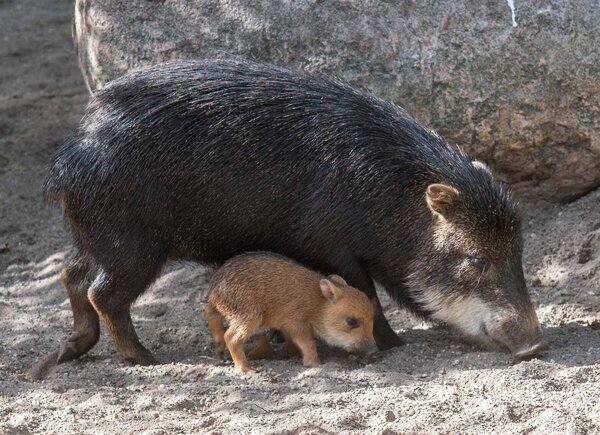Tayassu peccary, or javelina, is a fascinating member of the wild pig family, found primarily in the Americas. These animals exhibit remarkable adaptability, thriving in diverse habitats from forests to deserts.
Family and Genera
The wild pig family, known as Suidae, includes several genera and species. The main classifications are:
Sus: This genus includes the common domestic pig (Sus scrofa) and its wild relatives, such as the wild boar (Sus scrofa).
Tayassu: This genus contains the peccaries, including the Tayassu peccary (javelina), Tayassu tajacu (collared peccary), and Pecari angulatus (white-lipped peccary).
Tayassu peccary (Javelina)
Appearance: Medium-sized, with a bristly coat and short snout.
Habitat: Prefers scrublands and forests in the southwestern U.S., Mexico, and Central America.
Behavior: Social, living in small groups, and foraging for fruits and roots.

Tayassu tajacu (Collared Peccary)
Appearance: Similar to javelinas but slightly larger, with a distinct collar of white fur.
Habitat: Found in a range of habitats, including rainforests and semi-arid areas.
Behavior: Also social, often forming larger groups for foraging.

Pecari angulatus (White-lipped Peccary)
Appearance: Larger than the other two species, with a notable white stripe on its lips.
Habitat: Common in dense tropical forests and savannas in Central and South America.
Behavior: Highly social, often seen in herds of up to 100 individuals.

Sus scrofa (Wild Boar)
Appearance: Stocky build, long snout, and tusks; can vary in color.
Habitat: Adaptable to various environments, from forests to grasslands.
Behavior: Omnivorous and opportunistic feeders, often foraging alone or in small groups.
While Tayassu peccary and other wild pigs are not currently endangered, they face threats from habitat loss and hunting. Conservation efforts are crucial to maintain their populations and the ecosystems they support.
The wild pig family, including Tayassu peccary and its relatives, plays a vital role in their ecosystems. Understanding their classifications and behaviors enhances our appreciation of biodiversity and emphasizes the importance of conservation efforts to protect these remarkable animals.
Habitat Loss
One of the most significant threats to wild boars (Sus scrofa) is habitat destruction caused by urban development, agriculture, and deforestation. This loss reduces their natural living spaces and food sources.
Hunting Pressure
Wild boars are often hunted for sport and meat. Overhunting can lead to population declines, especially in areas where hunting regulations are weak or not enforced.
Human-Wildlife Conflict
As human populations expand into wild boar habitats, conflicts increase. Wild boars can damage crops and property, leading to retaliatory killings or culling efforts that further threaten their numbers.
Disease
Wild boars can be carriers of diseases that affect both wildlife and domestic animals. Outbreaks of diseases like African swine fever have raised concerns about their impact on agriculture and ecosystems.
Invasive Species
In some regions, wild boars have become invasive, disrupting local ecosystems and competing with native species for resources. This can lead to ecological imbalances.
The combination of habitat loss, hunting, human conflict, disease, and invasive status poses a multifaceted crisis for wild boars. Conservation efforts are essential to ensure their survival and maintain ecological balance.
General Behavior
Wild boars (Sus scrofa) are generally shy and tend to avoid humans. However, they can become aggressive if they feel threatened or cornered, especially females with piglets.
When Attacks Occur
Most incidents of wild boar attacks happen when:
Surprised: Approaching too closely can startle them.
Defending Young: Mothers are particularly protective of their piglets.
Provoked: Any attempt to chase or provoke them can lead to aggression.
Risk Factors
Feeding: People who feed wild boars or leave food out may attract them, increasing the chance of encounters.
Habitat Encroachment: As urban areas expand into wild boar habitats, encounters become more common.
Precautionary Measures
To minimize risks, it’s essential to:
Maintain a safe distance from wild boars.
Avoid feeding them or leaving food scraps in their habitats.
Stay alert and respectful of their space, especially in rural or forested areas.
While wild boars can be dangerous under certain conditions, they generally prefer to avoid humans. Understanding their behavior and taking precautions can help ensure safety for both people and wildlife.
animal tags: Tayassu-Peccary
We created this article in conjunction with AI technology, then made sure it was fact-checked and edited by a Animals Top editor.